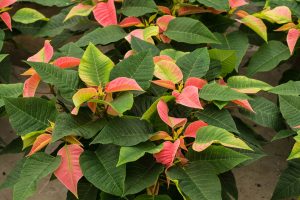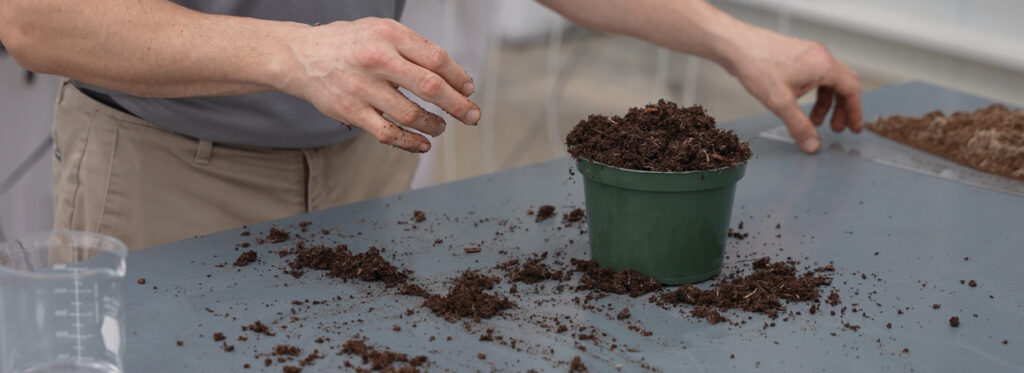Poinsettia Cultivation – Phase 3
By Brian Cantin, Senior Grower Advisor
The month of November focuses on bract expansion and cyathia development. Regardless of the region that you grow in, days are becoming shorter, light intensity has decreased, and the growth rate of the plants has slowed down when compared to growth activity during weeks 31 – 39. With this in mind, cultural and environmental practises will have to be adjusted to compensate for this slower growth and to enhance the quality of the bracts. Many years ago, large oversized bracts were the trademark of quality until bract edge burn became a post harvest headache. Temperature wise, avoid producing soft growth. Bracts that are grown too warm along with high humidity will be too lush and are more prone to shipping related problems. Growers should now review their water management practises, realizing that overwatering in November is conducive to plant loss from root rot pathogens. At this stage of growth, provide an adequate drying cycle to the media to maintain a strong root system and to begin the toning process of the poinsettia that is so crucial to post harvest quality. In cool dark weather, it’s better to water in the early morning than late in the day so plants are drying going into the night.
Fertilizer program
Review your fertilizer program and make adjustments according to the shift in growth rate. During this stage of growth, the fertilizer program needs to shift away from ammoniacal nitrogen to nitrate nitrogen forms of nitrogen. Poinsettias are now forming bract color and expansion which still require fertilization but as we approach mid-November, the overall level of fertilization needs to be reduced. At this time it is important to monitor media EC and pH to ensure the crop is not stressed. Gradually reducing the soluble salts in the media greatly reduces the incident of root damage especially under a drier regime. A combination of high salts and poor calcium uptake during bract expansion is part of the reason for BEB (bract edge burn). In regards to this plant malady, I would be remiss not to remind you, that practises to reduce BEB are still very important during this period of bract expansion. If you have already begun a spray program of calcium chloride you should continue this practise on a weekly basis to supply adequate calcium to expanding tissue. Before I move unto reviewing humidity management, one must also remember that poinsettias have a higher requirement for molybdenum. Continue to monitor the level of Mo in the soil and the tissue.
By mid to late November, poinsettia quality can be jeopardized by well-intentioned practises such as conserving energy costs. In the process of conserving energy, ventilation is minimized which reduces air movement and increases relative humidity. Calcium content in the tissue is most critical during bract expansion to reduce the incidence of BEB. The amount of calcium actually taken up by the bracts is not only influenced by the supply of Ca in the media but more importantly by the water movement into the roots, through the plant and transpired out of the leaves. High relative humidity inhibits transpiration and calcium movement through the plant. As weather conditions become more inclement, plants are now competing for space, and air movement through the plant canopy is reduced. Make an effort to reduce humidity by venting and heating even on cold overcast days. Trying to conserve too much energy during this period of bract expansion can create conditions conducive to latent infections of botrytis and/or powdery mildew. As the old adage goes, “Pay now or Pay later”, ideally keep the relative humidity below 75%; realistically make the best attempt at humidity control that you can afford.

–


